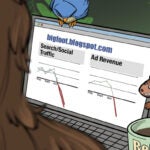 When the Media Rating Council (MRC) recently lifted its advisory against factoring viewability measurement into display ad transactions, one crucial format did not get the green light.
When the Media Rating Council (MRC) recently lifted its advisory against factoring viewability measurement into display ad transactions, one crucial format did not get the green light.
The accreditation vendor has urged advertisers to avoid trading on video viewability metrics – at least until the end of June. Question is, will that be enough time?
Currently, in-browser video can be considered viewable if it is 50% in view for a minimum of two seconds. That definition has existed for about three months, and according to David Gunzerath, associate director at MRC, “It needs another three months to be socialized.”
Not everyone agrees that’s a good working definition, however.
“The brand doesn’t usually show up in the first two seconds of an ad,” said Aaron Fetters, the Kellogg Co.’s director of its insights and analytics solutions center, during a presentation last week at the Association of National Advertisers (ANA) Media Leadership Conference.
Fetters also said video adds “extreme complexity” to the viewability equation, since it has to factor in not only the usual variables for traditional display such as browser type, iframes and above/below-the-fold considerations, but also numerous video-specific issues such as video player type, ad length and whether the ad is audible.
In a study conducted with BrightRoll, Kellogg discovered major discrepancies in the effectiveness and accuracy of four competing video viewability solutions. Each vendor was presented with a matrix of viewability scenarios consisting of five different user-scrolling actions, conducted in four browsers, and with iframes sometimes present. The same four vendors were then tested in a live campaign environment.
The results were discouraging. The report concluded:
“The consistency associated with display viewability measurement does not hold true in video viewability measurement. Significant differences were identified between viewability measurement companies in terms of capabilities and accuracy. The accuracy of various measurement partners varied primarily based on user behavior (whether the user scrolled during playback) and based on browser/iframe combinations. Some vendors may utilize sampling methodologies to estimate viewability, which may yield significant measurement error in certain types of campaigns (e.g. smaller campaigns with many sites).”
Despite these doubts, Kellogg has already begun trading based on the new video viewability metrics in certain scenarios. But it prefers to layer those metrics on top of completed videos only – rather than the “50% in view for two seconds” standard – and it’s not the only brand doing this.
Tremor Video says it has seen “tremendous” interest from advertisers in “100% viewable,” completed ad views, according to Katie Seitz, VP for sales strategy and product marketing at Tremor Video.
This is a high bar for publishers, even without a functional viewability metric.
“If companies are using different vendors to measure viewability, as a publisher it’s hard to measure along disparate metrics,” Seitz said Tuesday during a panel hosted by Integral Ad Science. “MRC has accredited 12 people but none of these numbers align, which doesn’t make it any easier for anyone in the space.”
Kelly Liyakasa contributed reporting.













